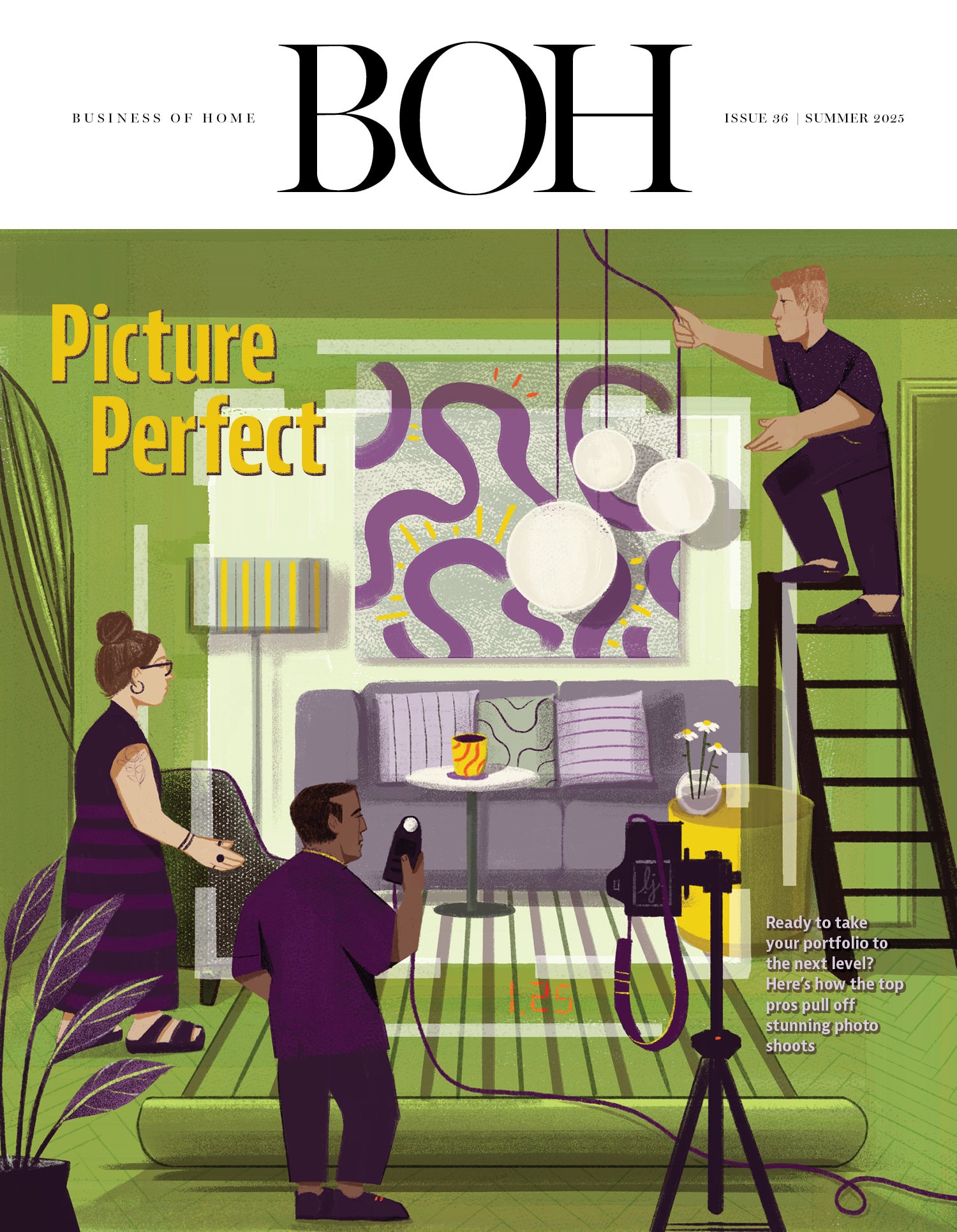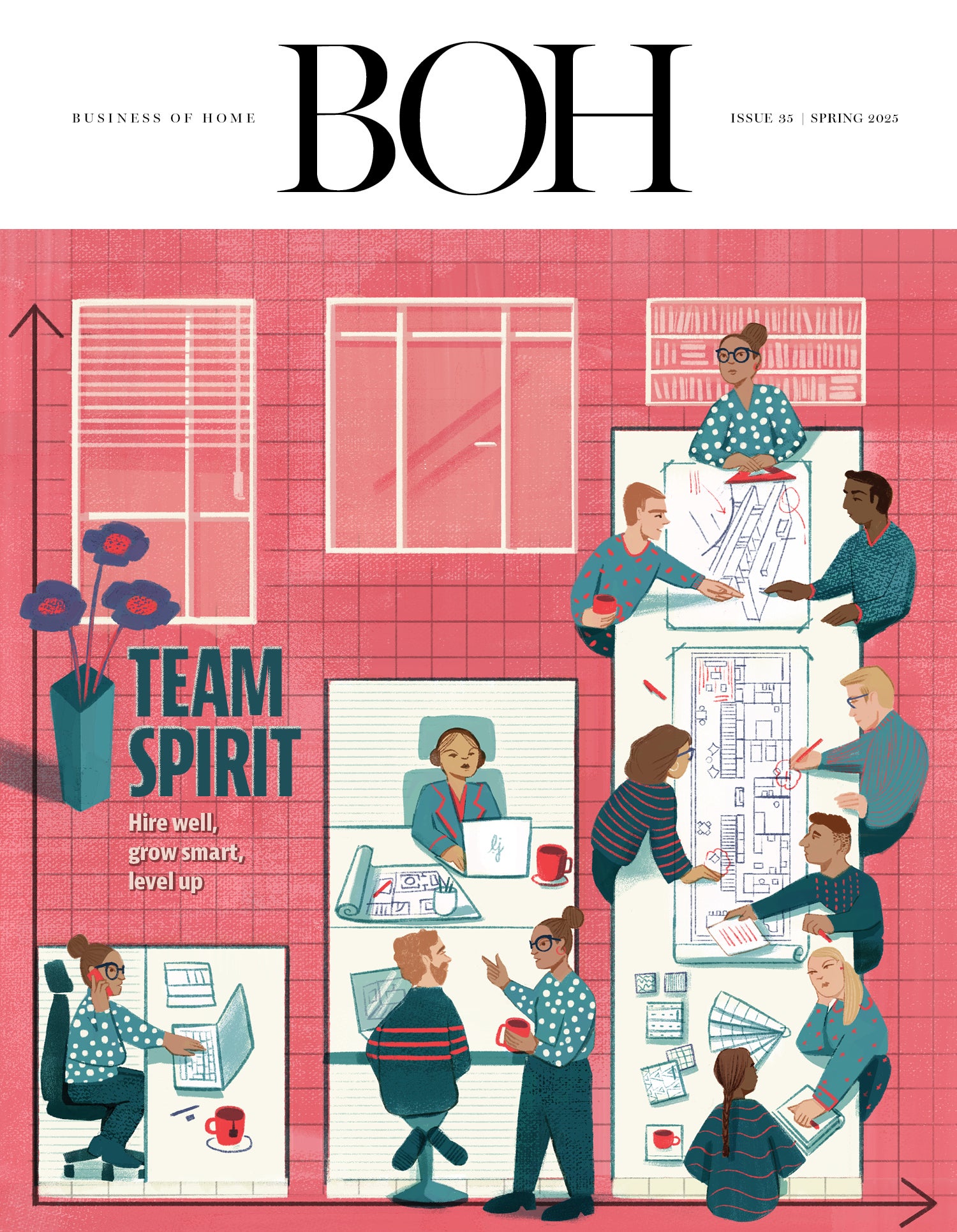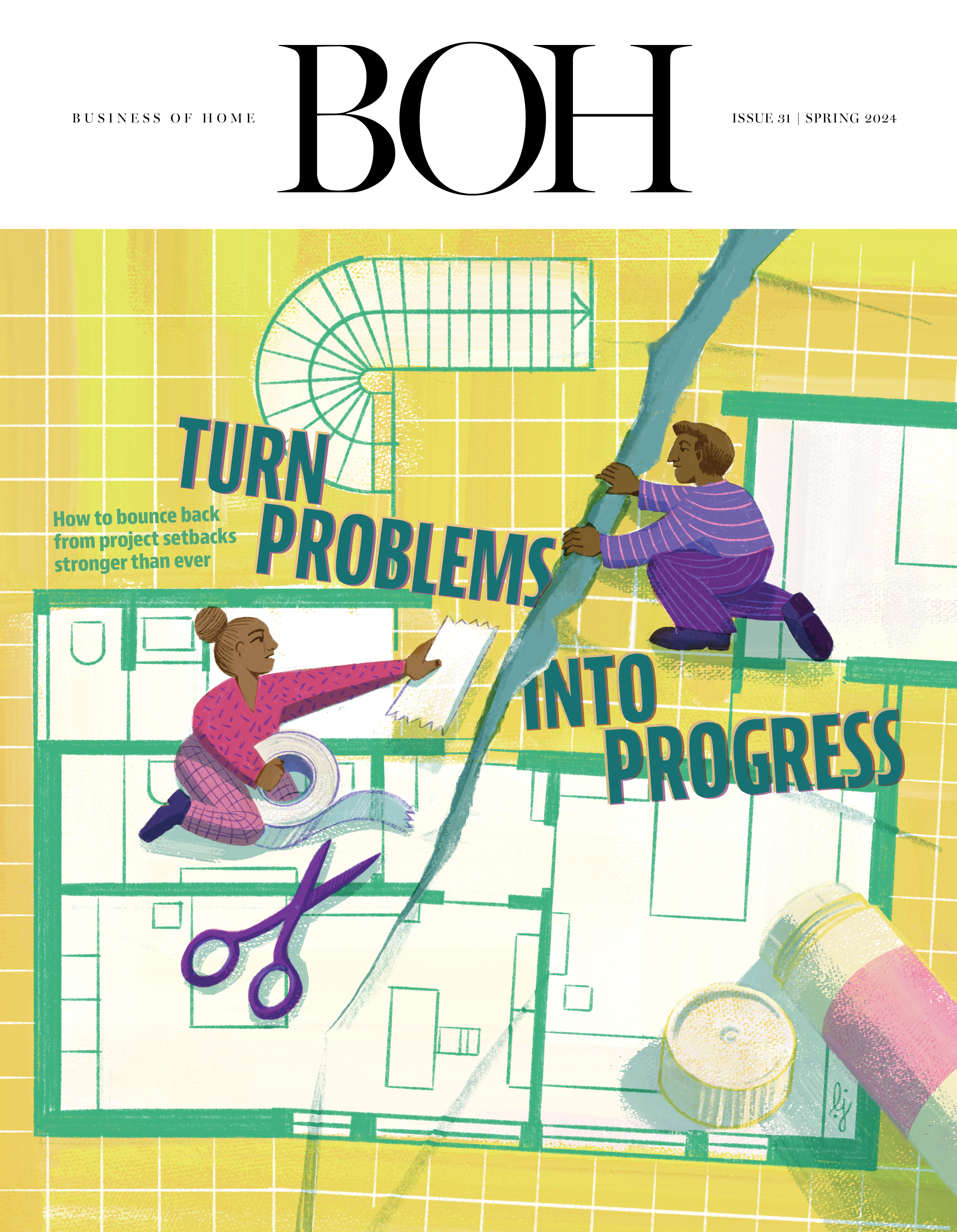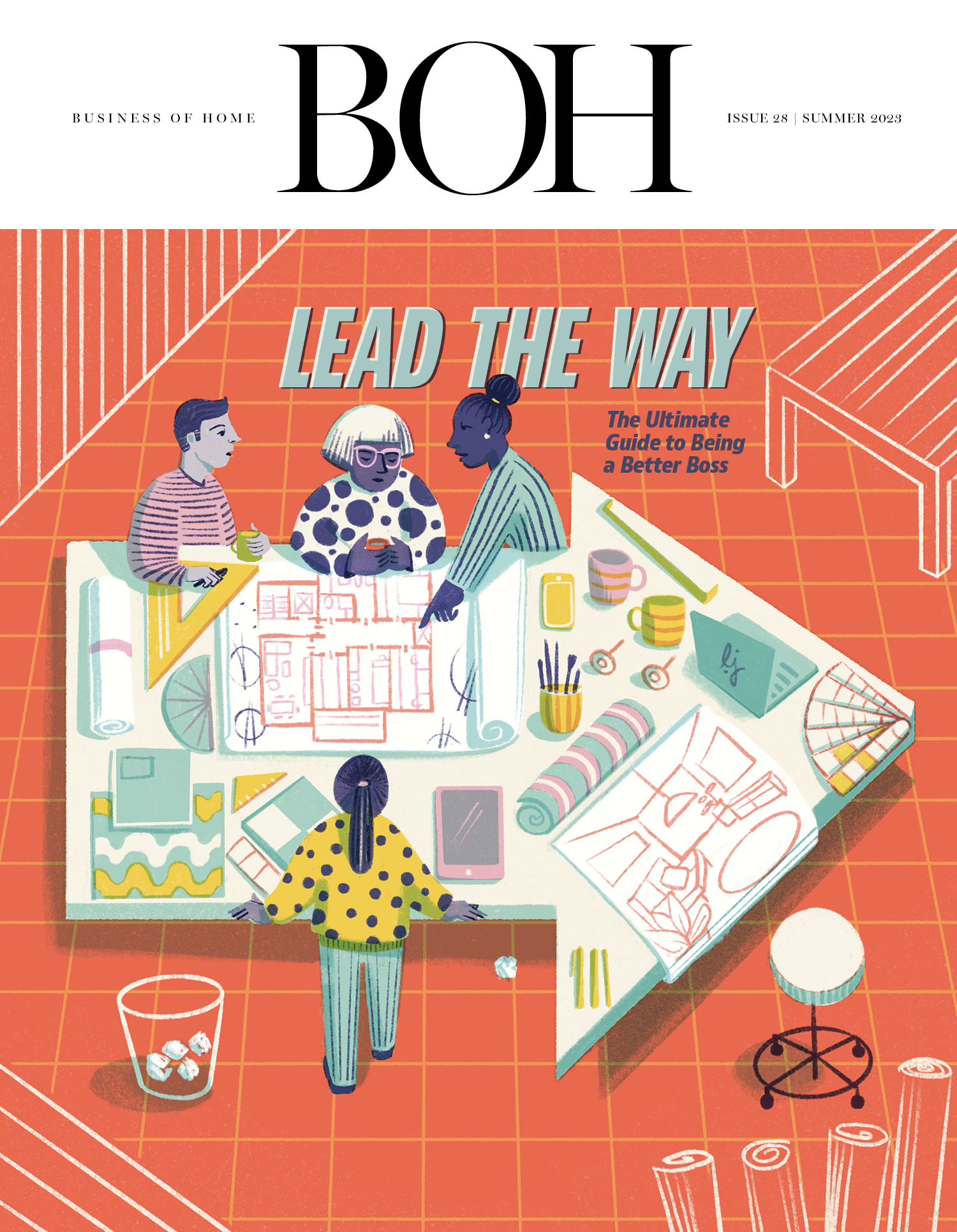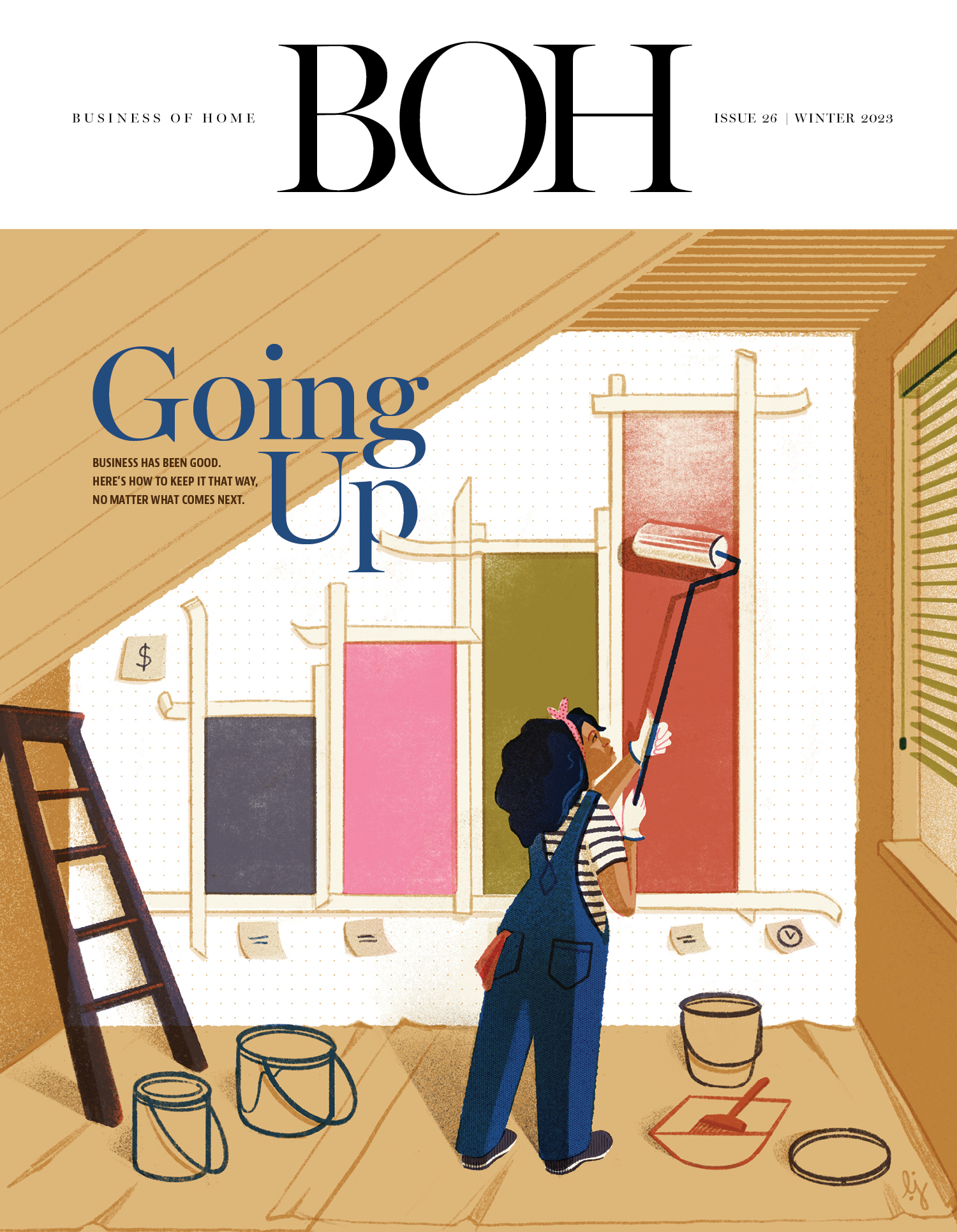This week in design, a new startup is using AI to task robots with the ancient art of stone carving—and the company has its sights on constructing buildings next. Stay in the know with our weekly roundup of headlines, launches, events, recommended reading and more.
Business News
Los Angeles–based Artivo Surfaces—a flooring distributor and the parent company of design brands Virginia Tile and Galleher Duffy—has acquired the luxury stone and tile companies Walker Zanger and Anthology from Smyrna, Georgia–based Mosaic Companies, PE Hub reports. The terms of the deal were not disclosed, though following the purchase, Walker Zanger and Anthology will retain their identities as divisions within Artivo. According to reporting from TheStreet, the acquisition comes on the heels of Mosaic’s Chapter 11 filing earlier this month, in which the company listed $10 million to $50 million in assets and $100 million to $500 million in debts.
Moorpark, California–based fabric company Pindler has announced the successful completion of a multiyear effort to eliminate PFAS—or per- and polyfluoroalkyl substances, commonly referred to as “forever chemicals”—from its entire product line, Furniture Today reports. Used for decades to make fabrics, mattresses and other upholstery materials stain- and water-resistant, the chemicals have been found to create harmful impacts on the environment and consumer health. The company’s design team embarked on its journey to eliminate PFAS in late 2021, and had transitioned all mill partners by the end of 2023. As of January of this year, Pindler had officially stopped stocking any products treated with the substances.
High interest rates are taking a toll on the highest end of the art market: Auction sales priced over $100 million were down 44 percent last year—a trend that appears to be continuing into 2025, according to data from research firm ArtTactic. As The Wall Street Journal reports, the sudden decline marks a departure from the longstanding correlation between art prices and the stock market, which had historically mirrored each other but now appear to be headed in separate directions as the S&P 500 remains near record highs. The change could be attributed to a shift that occurred after the 2008 financial crisis, when ultrawealthy buyers and private banking institutions began treating blue chip art as an asset class, sending the value of art sold at auction for $10 million or more up by 700 percent between 2009 and 2022 (compared to 12 percent for works valued below $50,000). As interest rates have increased, however, those investors have backed away from allocating their wealth toward art, with 15 percent doing so in 2024, down from a peak of 24 percent in 2022. Before 2022, collectors could borrow against roughly 50 percent of their art collections at a rate of less than 3 percent, but the cost of an art-backed loan has reached nearly 8 percent in the years since—which has turned investors’ attention back to higher-yield areas like the stock market or real estate.
A new bill aims to create a government-backed loan program for homeowners looking to build accessory dwelling units, or ADUs, on their properties, The Wall Street Journal reports. Introduced in Congress last week by Rep. Sam Liccardo, a Democrat from California, and Rep. Andrew Garbarino, a New York Republican, the proposed policy was created in an effort to address the nationwide housing shortage, as the U.S. market is short roughly 4 million homes, and nearly a third of all households spend more than a third of their income on rent or mortgage payments. The bipartisan bill—which has been endorsed by at least 16 additional legislators, along with industry groups like the National Association of Home Builders—aims to reduce the risk for private lenders offering second mortgages to fund ADU construction by providing a government safety net in case of defaults.
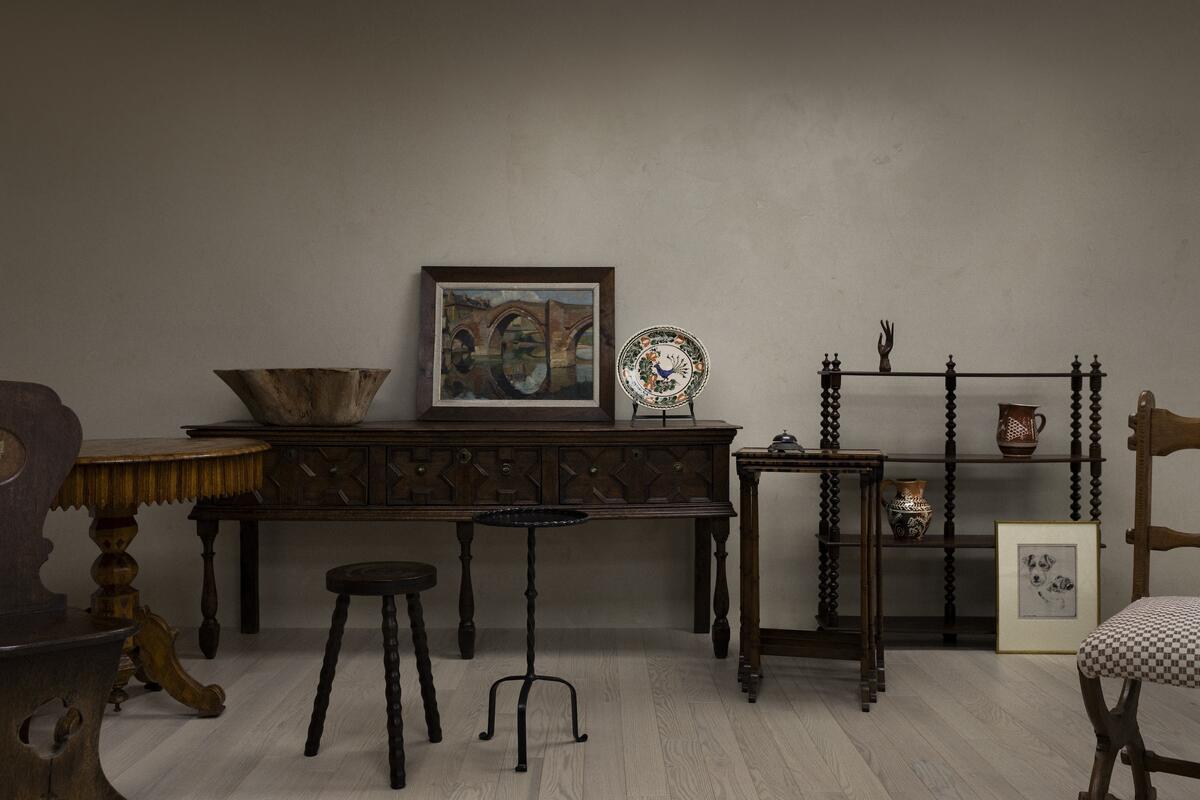
Launches and Collaborations
Next month, Liaigre will make its debut in Hamptons, with a pop-up at interior design studio and art advisory Frampton Co’s Bridgehampton gallery, Exhibition The Barn. Running from August 1 to 25, the seasonal showcase will feature a presentation of Liaigre’s furniture and objects, along with a series of events, including cocktail receptions, salon-style gatherings and a designer lunch.
Tennessee-based interior designer Lauren Sullivan has announced the launch of an online antiques shop called Well Found. The platform will feature a curated selection of European furniture, art and objects sourced by Sullivan during her travels through England, Italy and France, and has debuted with an initial assortment of 19 unique pieces—including a rare René Drouet églomisé coffee table circa 1940, an 18th century French arched gilt mirror, and midcentury Spanish leather chairs.
Newport Beach, California–based design firm Pure Salt Interiors has teamed up with Tempaper & Co. for a new collection of peel-and-stick wallpaper. The line features an aesthetic palette drawn from the firm’s own style—featuring natural colors, subtle textures and classic silhouettes, available in five different patterns.
Showroom Representation
Glant Textiles is now represented by Clarence House (located in the D&D Building) in New York and Coleman & Rose in Washington, D.C. Both showrooms will now display the brand’s full range of woven textiles (crafted in its mill in Northern Italy), which are available in a wide array of colors and suitable for high-end residential and commercial application.
Recommended Reading
Last week, the news broke that an Italian court had placed luxury cashmere brand Loro Piana (which produces apparel as well as interior textiles) under judicial administration for a year after uncovering instances of worker exploitation in its supply chain. As Sarah Kent writes for Business of Fashion, the discovery of labor violations within the LVMH-owned brand isn’t an isolated incident, and points to larger challenges related to labor oversight in the luxury sector.
The term china cabinet likely conjures associations with stuffy dining rooms and dusty formal dinnerware sets—but that wasn’t always the item’s sole purpose, and maybe it no longer has to be. For Untapped, Sarah Archer pens a defense of china cabinets, arguing for a reinterpretation of the decor piece as a cabinet of curiosities, built to hold treasured objects acquired over a lifetime.
Call for Entries
The High Point Market Authority is now accepting applications for its Fall 2025 Design Influencers Tour, produced in partnership with Esteem Media. The program invites 10 design influencers on a guided, two-day discovery tour of High Point Market, during which participants will utilize their online platforms to document emerging trends—in turn, they are compensated with a service fee and a stipend for travel accommodations. To apply before the August 4 deadline, click here.
Cue the Applause
The American Society of Interior Designers has announced the 2025 honorees for its annual Ones to Watch program, which highlights rising interior design professionals from historically underrepresented groups. This year’s Ones to Watch Scholars—who will receive access to a two-year leadership development program—include ASID members Bri Dazio, Bryana Duley, Kenya Jones-Lowell, Whitney Luerding, Mona Nahm, Charlotte Noyes, Johnson Pun and Shawn Shin. For the full list of winners, click here.
In Memoriam
Suzanne Currey, co-founder of Currey & Company, has passed away at the age of 81. Currey’s journey in the home world began in 1969, when she co-founded home furnishings retailer Storehouse Inc. alongside her husband, Robert B. Currey. Building off the enterprise’s success, the duo established Currey & Company in 1988—a venture that, 37 years later, employs a 120-person workforce in the Southeastern U.S., along with operating facilities in the Philippines, China and India. After passing the reins to their son, Brownlee, the Curreys retired from the business and began the next chapter of their lives in Sparta, Georgia, where they spent many happy years among family, friends and the local community. “Suzy was a driving force in establishing Currey & Company and shaping our mission, values and vision from the beginning. Her dedication and passion for the business will always be remembered,” says Bob Ulrich, the company’s senior vice president of sales and marketing. “For me personally, Suzy always was the calm voice of reason when we needed her support, and I will miss her dearly.”




